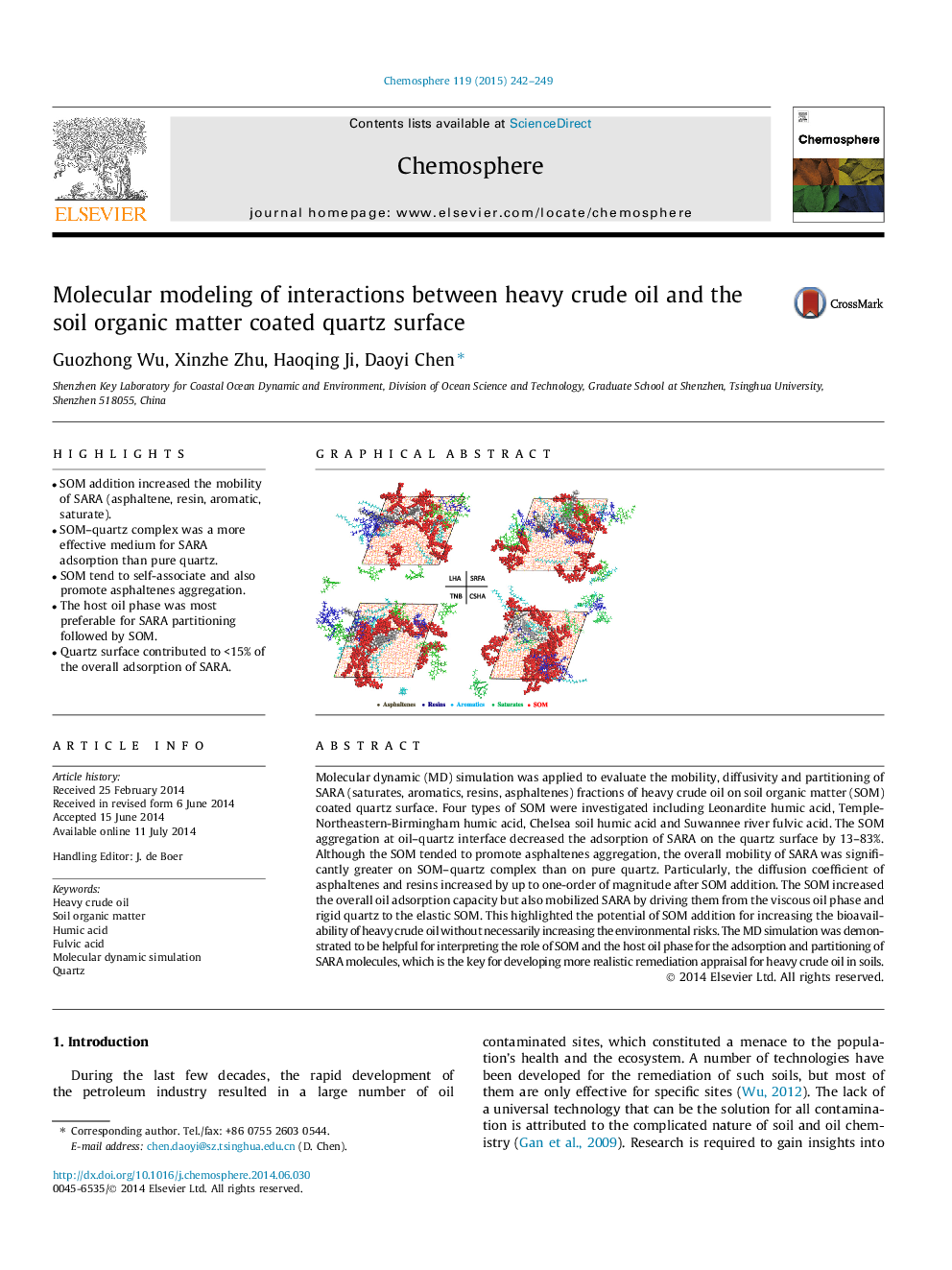| Article ID | Journal | Published Year | Pages | File Type |
|---|---|---|---|---|
| 4408626 | Chemosphere | 2015 | 8 Pages |
•SOM addition increased the mobility of SARA (asphaltene, resin, aromatic, saturate).•SOM–quartz complex was a more effective medium for SARA adsorption than pure quartz.•SOM tend to self-associate and also promote asphaltenes aggregation.•The host oil phase was most preferable for SARA partitioning followed by SOM.•Quartz surface contributed to <15% of the overall adsorption of SARA.
Molecular dynamic (MD) simulation was applied to evaluate the mobility, diffusivity and partitioning of SARA (saturates, aromatics, resins, asphaltenes) fractions of heavy crude oil on soil organic matter (SOM) coated quartz surface. Four types of SOM were investigated including Leonardite humic acid, Temple-Northeastern-Birmingham humic acid, Chelsea soil humic acid and Suwannee river fulvic acid. The SOM aggregation at oil–quartz interface decreased the adsorption of SARA on the quartz surface by 13–83%. Although the SOM tended to promote asphaltenes aggregation, the overall mobility of SARA was significantly greater on SOM–quartz complex than on pure quartz. Particularly, the diffusion coefficient of asphaltenes and resins increased by up to one-order of magnitude after SOM addition. The SOM increased the overall oil adsorption capacity but also mobilized SARA by driving them from the viscous oil phase and rigid quartz to the elastic SOM. This highlighted the potential of SOM addition for increasing the bioavailability of heavy crude oil without necessarily increasing the environmental risks. The MD simulation was demonstrated to be helpful for interpreting the role of SOM and the host oil phase for the adsorption and partitioning of SARA molecules, which is the key for developing more realistic remediation appraisal for heavy crude oil in soils.
Graphical abstractFigure optionsDownload full-size imageDownload as PowerPoint slide
